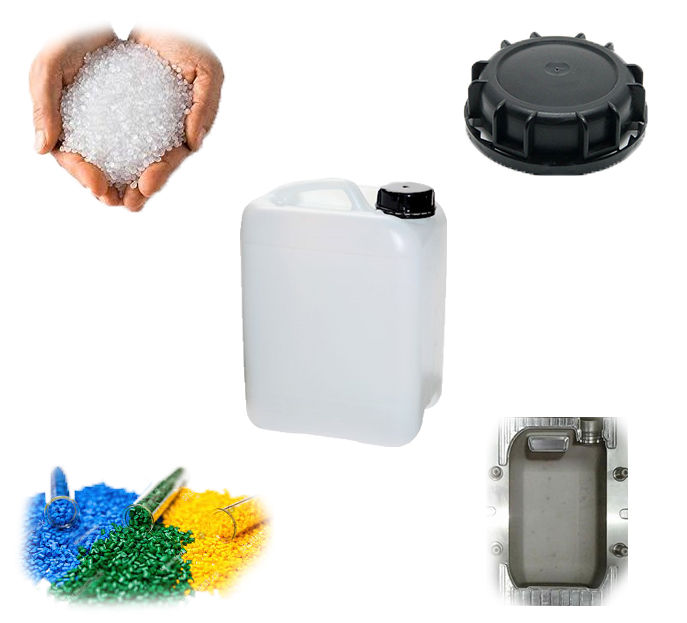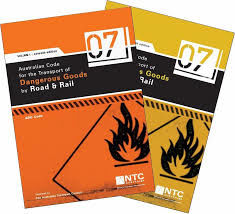“To make things manageable, we have variations to initial approvals. This means approval holders can have many packaging designs with the same approval number if they only differ in minor variations.”
Background
This article discusses the allowable variations of Dangerous Goods Packaging Approvals (“variations” of DG “approvals”). This article focuses on plastic jerrycans because they are so common in industry. Furthermore, this article focuses on the Victorian Competent Authority (CA) as it’s the largest issuer of approvals in Australia. You can compare the article’s points can to other DG packagings (“packagings”) and their material types.
A state’s CA issues a package with an identifying approval number. The approval ties to the specifications of the packaging’s design.
As client demand varies, so do packages vary. Over time, many variations to a packaging’s specification would need many approvals. This would be tedious for the CA and approval holders.
To make things manageable, we have variations to initial approvals. This means approval holders can have many packaging designs with the same approval number if they only differ in minor variations. The clauses within the codes and the Competent Authority define the term “minor”.

The dangerous goods packaging codesThe Dangerous Goods (Transport by Road or Rail) Regulations (“the regulations”) refers to the Australian Dangerous Goods Code for the Transport of Dangerous Goods by Road and Rail (ADG Code) which incorporates the requirements of the international United Nations Recommendations on the Transport of Dangerous Goods (UNRDG) (“the codes”). The codes state that: |  |
For variations of plastic jerrycans pigment & inhibitor content:
(6.1.4.8.2) If protection against ultra-violet radiation is required, it must be provided by the addition of carbon black or other suitable pigments or inhibitors. These additives must be compatible with the contents and remain effective throughout the life of the packaging. Where use is made of carbon black, pigments or inhibitors other than those used in the manufacture of the tested design type, retesting may be waived if the carbon black content does not exceed 2% by mass or if the pigment content does not exceed 3% by mass; the content of inhibitors of ultraviolet radiation is not limited.
For variations of packagings reduced height & surface treatments:
(6.1.5.1.2) Each packaging design type must successfully pass the tests prescribed in this Chapter before being used. A packaging design type is defined by the design, size, material and thickness, manner of construction and packing, but may include various surface treatments. It also includes packagings which differ from the design type only in their lesser design height.
For variations of packagings dimensions:
(6.1.5.1.5) The Competent Authority may permit the selective testing of packagings that differ only in minor respects from a tested type, e.g. smaller sizes of inner packagings or inner packagings of lower net mass; and packagings such as drums, bags and boxes which are produced with small reductions in external dimension(s).
For using different types of inners within a combination packaging:
(4.1.1.5.1) Where an outer packaging of a combination packaging or a large packaging has been successfully tested with different types of inner packagings, a variety of such different inner packagings may also be assembled in this outer packaging or large packaging. In addition, provided an equivalent level of performance is maintained, the following variations in inner packagings are allowed without further testing of the package:
Inner packagings of equivalent or smaller size may be used provided:
A lesser number of the tested inner packagings, or of the alternative types of inner packagings identified in (a) above, may be used provided sufficient cushioning is added to fill the void space(s) and to prevent significant movement of the inner packagings.
The inner packagings are of similar design to the tested inner packagings (e.g. shape – round, rectangular, etc.);
The material of construction of the inner packagings (glass, plastics, metal, etc.) offers resistance to impact and stacking forces equal to or greater than that of the originally tested inner packaging;
The inner packagings have the same or smaller openings and the closure is of similar design (e.g. screw cap, friction lid, etc.);
Sufficient additional cushioning material is used to take up void spaces and to prevent significant movement of the inner packagings; and
Inner packagings are oriented within the outer packaging in the same manner as in the tested package.
Any variation(s) to the initial approval may operate under its approval number if they fall under the above clauses.
Additional Competent Authority variations
We’re in the grey.
There is a Competent Authority (CA) for each state & territory (“state”) of Australia and they may grant exemptions to the regulations. Thus, this section depends on how each CA interprets the regulations and what concessions they grant in “the spirit” of the regulations (if any).
The Victorian CA uphold the codes’ variations of dangerous goods packaging approvals. Furthermore, they’ve broadened clause 6.1.5.1.5 to include other minor variations as listed below. This is only if the variation maintains an equal level of performance as the initial approval. Approval holders must be able to prove this with a NATA test report if requested by the Competent Authority.
Minor variations
The packaging’s fundamental look and rating
Must be the same, but minor variations include:
- a different neck finish,
- changes of surface treatments,
- a reduced packaging height, or
- small reductions in external dimension.
The packaging’s method & material of construction
Must be the same, but minor variations include a different:
- material supplier or material grade,
- quantity of pigment or performance additive incorporated into the material, or
- performance coating.
The packaging’s closure size & function
Must be the same, but minor variations include a different:
- closure manufacturer,
- material supplier or material grade,
- feature (vented, tamper-evident, child-resistant),
- sealing method (wedge, annular gasket, wadded, induction seal),
- thickness of the annular gasket or wad, or
- application torque.
What to walk away with
Various Dangerous Goods Packaging Designs may use the same approval number if they differ in minor variations from the original approval. The clauses within the codes and the Competent Authority define the term “minor”.
The codes allow for variations of packagings however some variations do not need further testing.
Within their jurisdiction, each Competent Authority may grant exemptions and concessions from the regulations. These depend on their interpretation of the regulations.
Variations must maintain an equal level of performance to the original approval. Approval holders must be able to prove this with a NATA test report. The Competent Authority may request this at any time.
(6.1.5.1.4) Tests must also be repeated after each modification which alters the design, material or manner of construction of a packaging.
(6.1.5.1.8) The Competent Authority may at any time require proof, by tests paper writing in accordance with this section, that serially-produced packagings meet the requirements of the design type tests.
SupportLet us know if you have any questions about variations to packaging design approvals. We’re happy to share our insights. Email: info@auscompliancelab.com. For information about revalidation testing of dangerous goods packaging design approvals, then check out Why it’s important to revalidate dangerous goods packaging approvals. This article is subject to ACL’s Disclaimer of Published Materials. |  |

